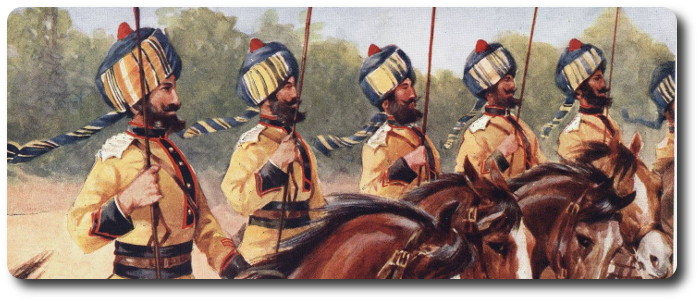Topic: Army Rations

Fighting Men of India Brought Strange Problems of Food and Religion
The Northern Advance, Barrie, Ontario, 24 Jan 1918
Lieut. A.M. Bealson
One of the commissariat problems of the war which has been solved satisfactorily, was the question of "Native meat." or the ration of meat for the Indian troops serving in Europe. The solution has been found in the institution of "Native butcheries." A native of high caste in India would, of course, not eat any meat that even the shadow of a European had passed over. In coming to France the Native troops have, however, been granted certain religious dispensations, not only with regard to food, but, in the case of Hindus, in being allowed to leave the boundaries of their own country. Doubtless a dip in the Ganges, for those who survive the war and return to India after it is over, will put matters right again! Nevertheless, their caste rights as to food are as strictly observed as the exigencies of active service allow. The goats and sheep, chiefly Corsican and Swiss, purchased for their consumption, are sent up in a truck to railhead alive, and are slaughtered by men of their own caste in a butchery arranged for the purpose, generally in a field or some open place in close proximity to the railhead. The Mohammedan will eat only goats or sheep slaughtered by having their throats cut, and the Hindu by their being beheaded. The latter method is carried out in the abattoir by a native butcher with the aid of a cavalry sword at one fell swoop, and of the two methods is certainly to be recommended as being the most rapid and instantaneous death. I need hardly add that the Native butchery is always looked on as an object of awe and interest, of not of excitement, by the French inhabitants, and none the less by the English soldiers, who consider it a tremendous joke.
The Natives do not object to their meat being handles by English soldiers, or to it being brought to them in the same lorry which also perhaps carried British ration beef, although the cow is a sacred animal to the Hindu and in the form of beef is naturally distasteful. The only point is that the goat's meat or mutton intended for their consumption must not actually come in contact with the beef, and this is arranged for by a wooden barrier between the two erected in the interior of the lorry. On one occasion, however, the native rations for a certain regiment had just been dumped on the side of the road, and were being checked by the Daffadar, or Native quartermaster, when at a critical moment an old sow, followed by her litter, came out of a farm gate and innocently ran over the whole show. A lot of palaver followed amongst the Natives, and there was no alternative; they would not have these rations at any price, and back they had to be taken to be exchanged. The pig is, of course, abhorrent to the Mussulman.
One story in connection with the rationing of the Indian cavalry whilst in the trenches at Ypres in the summer fo 1915 may be of interest. The cow being a sacred animal to the Hindu, it became necessary to replace the usual tins of bully beef by a suitable substitute. With this end in view, quantities of tins of preserved mutton were sent up for consumption by the Hindu personnel. The tins in which it was packed, however, unfortunately bore the trade mark of the packers, Messrs. Libby---a bull's head---and in consequence the Hindus would not have it that their contents could be anything but beef, until their own Native officers convinced them that such was not the case.
The organization for rationing Native troops is such that they are able to be fed in accordance with the rites of their caste, surely not an unimportant factor. There are various special articles.
Atta is coarse ground flour, very similar to that of which so-called "standard" bread is made at home. Of it the Natives make chupattis, which are round flat cakes of baked dough. Dhal consists of pried pease. Ghi is a kind of butter, which, judging by its smell, would appear to be rancid. Gur is simply brown sugar or molasses. It may be mentioned that the Native meat ration is very small. The Natives are not meat-eaters in the accepted sense of the word, and their small ration they invariably "curry" with the ration of ginger, chillies, turmeric and garlic, which are the raw ingredients of curry powder. Not infrequently also they are issued with a ration of rice and also dried fruits.

